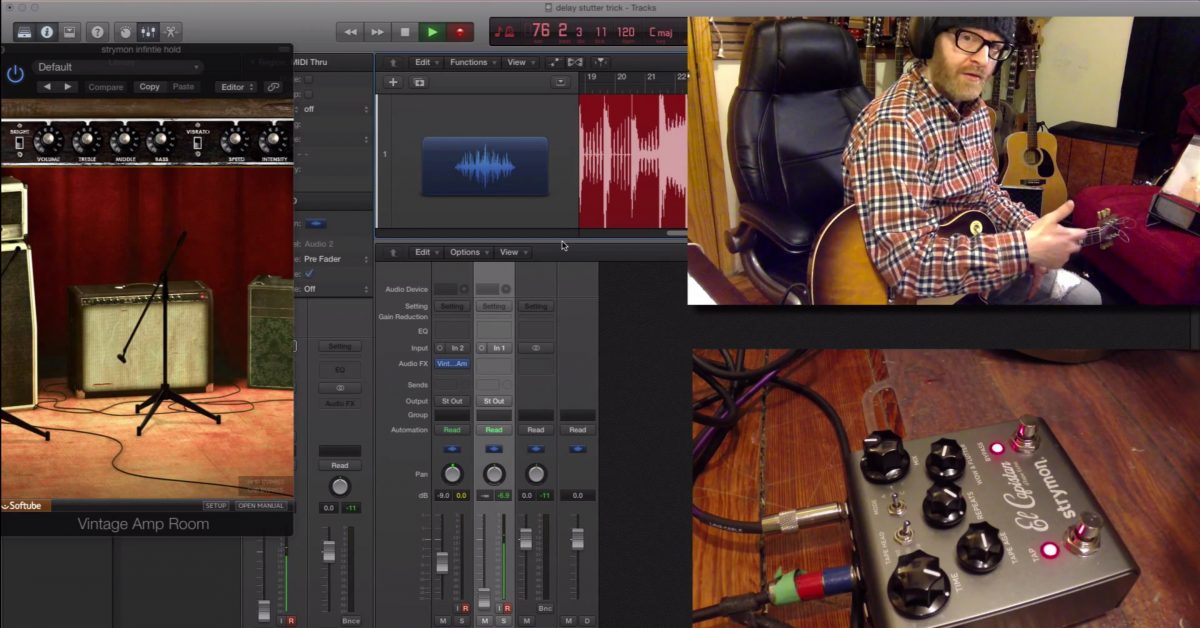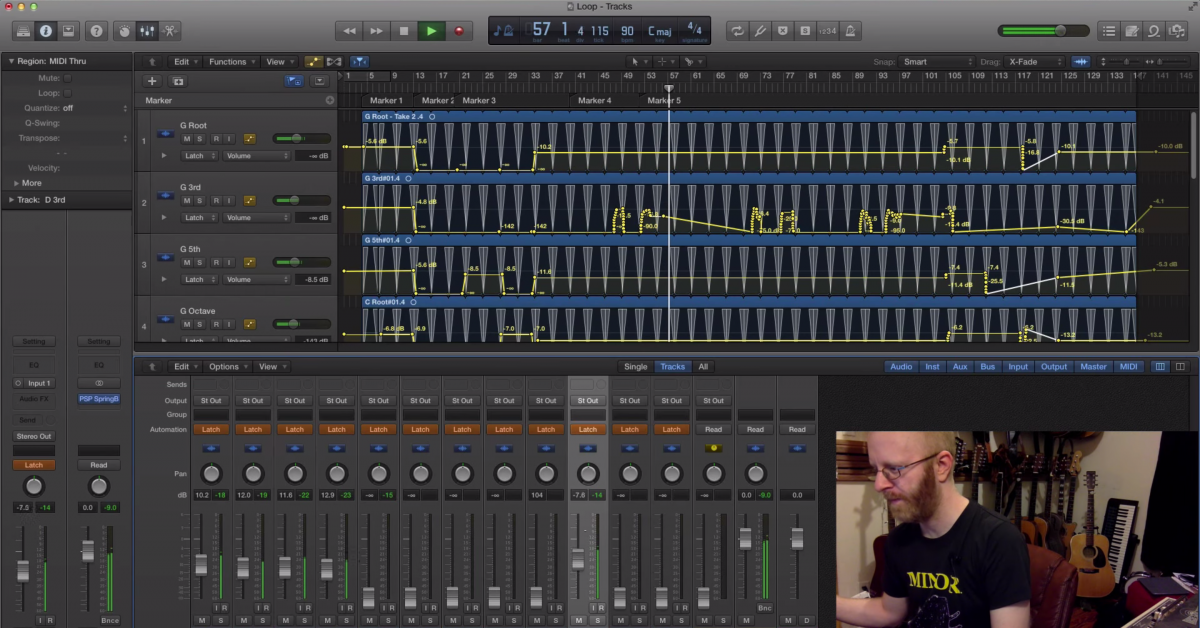How to Ration Space in a Dense Arrangement
Article Content
Sometimes producing means taking away more than adding. One must always be thinking about refinement. This is most often observed in the choice of instruments.
But what about how the parts of each instrument are adding up?
If you have a bassist, pianist and two guitarists playing chords at the same time it can be a little dense. At this point, you will have very little sonic space left.
Sometimes this is exactly what you’re looking for.
But what if it’s not and your arrangement is like one of the houses you see on Hoarders?
Cookie Monster
It’s in these cases that you have to be a mom with four kids trying to share one cookie.
You have to break it apart evenly so nobody cries. And then somebody still cries!
By breaking it apart, I’m not saying asking someone not to play. I’m seeking to carve out space within the chords.
Concerto No. 3
This requires us to think of rock music a little more like classical music. It’s a sum of all parts. Every musician is not competing to play every note of the chord in classical music.
This is partly due to the fact that most instruments used in an orchestra can only play one or two notes at a time.
Several of the instruments we use in rock music allows us to play a whole lot of notes at the same time. If you have two guitars playing full chords at the same time, it can be very lush. That’s not even adding bass or piano.
Slim’s Night Out
If the instrument collage is sounding too muddy and unrefined, we need to slim it down.
Just because we can play six notes on a guitar and ten at a time on a piano doesn’t mean we should.
If everyone has their own space, things will sound full without that mud mucking up your musical house.
Crystal Mathematics
Let’s inspect this concept a bit deeper. We’re going to pretend everyone is playing an A chord.
The A chord itself consists of three notes to make a simple triad: A C# E.
Often when guitarists play an A chord they play duplicates or octaves of some notes. In the context of a solo guitar, this is a great asset.
A traditional 1st position A chord on guitar has the following: A E A C# E. There are two A’s and two E’s in that voicing.
If the second guitar is playing an A bar chord at fret 5 that would consist of: A E A C# E A. That’s 10 notes already!
The bass is going to play a low A (that’s eleven). The pianist sits down after sipping their tea … and decides to play A and E on the left hand and C# E A on the Right hand.
That’s a whopping total of sixteen notes playing at one time! Talk about putting on some holiday weight.
This would be the first place I’d look when there’s a large band and the arrangement is lacking space and definition.
It’s definitely not the microphone or preamp!
Mansion On The Hill
We want to give everyone their own “wing” of the song mansion.
We can start by trying not to repeat notes on different instruments. Meaning no two notes in the same octave.
If the bass is playing an A2, the piano should treat that like a hot potato. You can also think about skipping the root on guitar if the bass is playing it. Stick to 3rds and 5ths. And try playing two or three note chords on the guitar.
On piano, you could limit the left-hand movement. Make sure to have a rope handy because you’re going to have to tie their left hand down.
Tip: I would use heavy gauge rope.
What’s My Cut
Perhaps you can try each instrument playing in different octaves with two note chords. The bass, of course, plays one note. This would lead to a total of seven notes. That’s down 9 lbs… I mean notes. That’s like pre-Thanksgiving pie weight.
From here you can start adding other notes back in if it needs more density.
You would be surprised how big a two-note chord voicing can sound in a big mix. It will pop though more than a fat voicing.
Pre-Q
It’s basically arrangement EQ’ing. We do it with frequencies and EQ plugins, right? You don’t often let everything go full range, do you? You use filters to ration the frequency spectrum.
Arrangements need this all the time. As the producer, you act as neutral ears.
Sometimes musicians are caught up in their own frequency vortex. You’re there to bring it back home.
This is one of the most overlooked principles of modern production. Develop an understanding of this concept and it can allow you more flexibility in shaping arrangements.
For more on learning music theory in a simple way, check out my book Practice Makes Progress.





